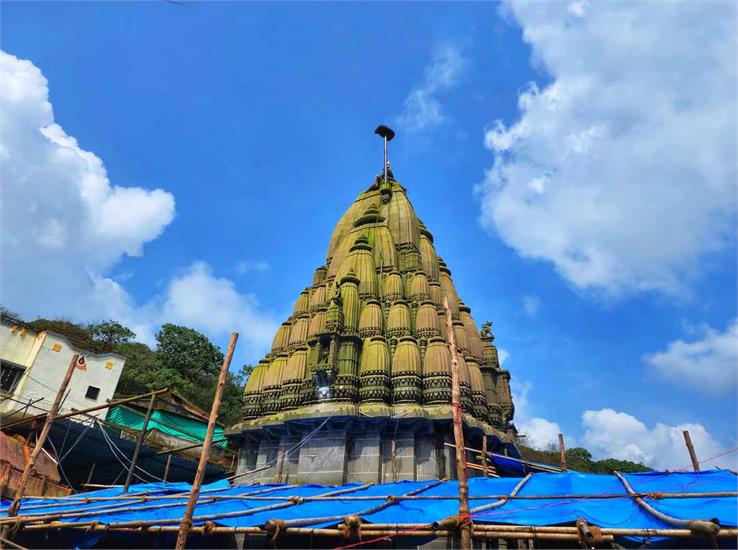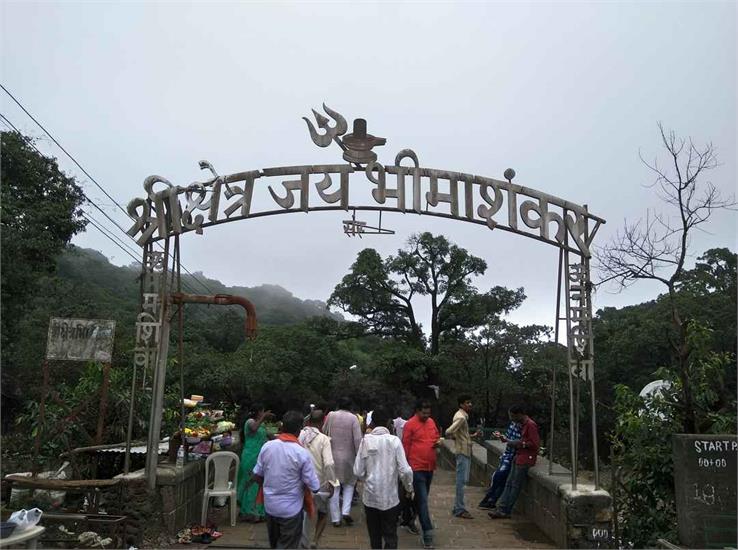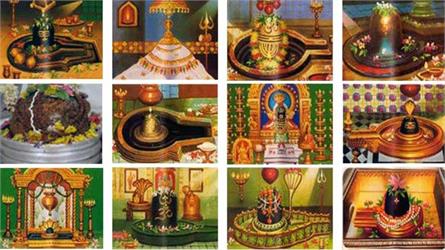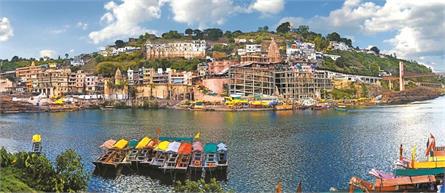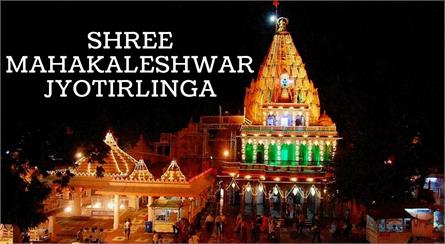Bhimashankar Jyotirlinga: A Spiritual Retreat Amidst Nature's Abode
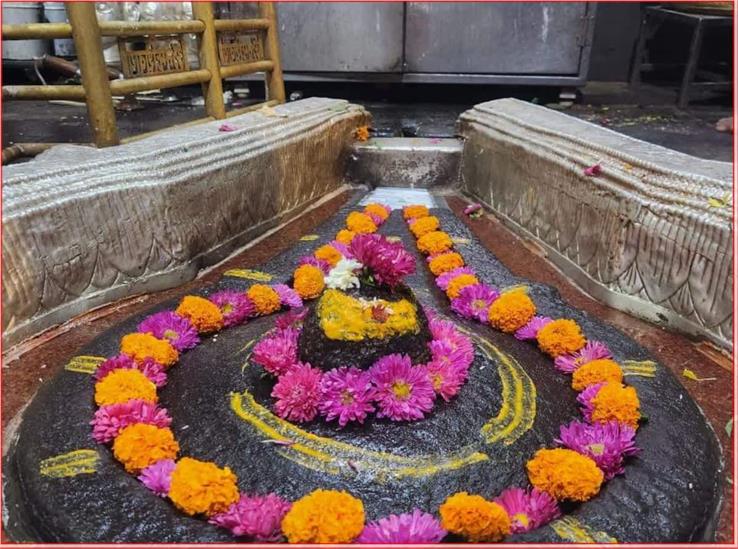
Bhimashankar Temple is a place where spirituality and nature merge harmoniously. The Bhimashankar Temple is in the Sahyadri Hills in Maharashtra, India. This sacred site draws millions of devotees and nature lovers every year. The temple is dedicated to Lord Shiva and is one of the 12 Jyotirlingas, considered the most sacred abodes of Lord Shiva.
History of Bhimashankar Jyotirlinga Temple
The historical background of the formation of Bhimashankar Temple needs to be well-documented. However, the temple has a significant historical and cultural significance deeply rooted in ancient times. The exact date of the temple's construction is uncertain, but it had built during the reign of various dynasties that ruled the region.
One of the earliest historical references to the Bhimashankar Temple is in ancient scriptures and literature. The temple is in the Sahyadrikhanda of the Skanda Purana, a sacred text in Hinduism. It suggests that the temple's existence predates the medieval period.
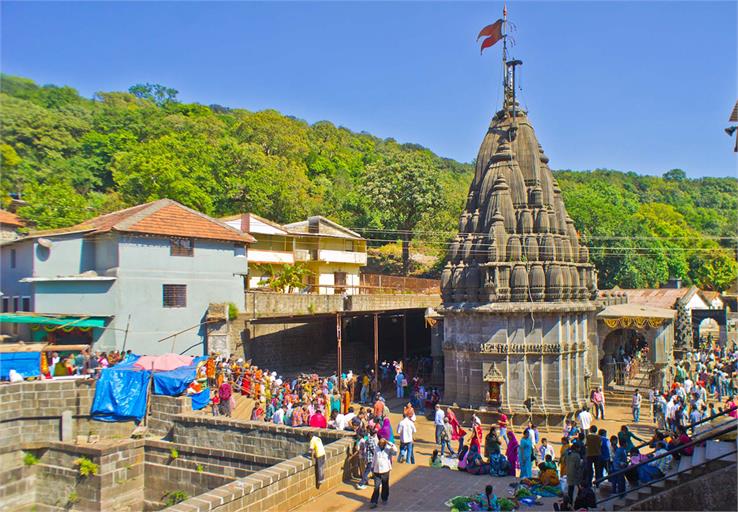
The region where the temple is situated has a rich historical and cultural heritage. Various tribes and communities have inhabited the Sahyadri Hills since ancient times. The dense forests surrounding the temple were considered sacred and associated with Lord Shiva and the natural elements. The temple's location amidst these serene natural surroundings adds to its historical significance.
Also Read: The Mystery of Omkareshwar Jyotirlinga
Over the centuries, the Bhimashankar Temple has undergone several renovations and reconstructions. The present-day temple structure showcases a blend of architectural styles, reflecting the influence of dynasties and rulers patronising the temple.
During the medieval period, the region had ruled by various dynasties, including the Yadavas, the Bahamani Sultanate, and the Marathas. These rulers contributed to the development and maintenance of the temple. They provided patronage and grants to the temple, enabling the construction of additional structures, improvement of facilities, and organisation of religious festivals and rituals.
The Bhimashankar Temple has also witnessed the influence of the Peshwa dynasty, who were prominent rulers of the Maratha Empire. The Peshwas were ardent devotees of Lord Shiva and made significant contributions to the temple's development. They constructed additional structures within the temple complex and established rituals and traditions.
Today, the Bhimashankar Temple continues to be an important pilgrimage site for devotees of Lord Shiva. It attracts many devotees and visitors throughout the year who seek blessings and experience the spiritual ambience of the sacred place.
Also Read: Powerful Form of Lord Shiva In Mahakaleshwar Jyotirlinga
Temple Architecture
The architecture of the Bhimashankar Temple reflects a blend of traditional and contemporary styles, showcasing intricate craftsmanship and sacred symbolism. The temple follows the Nagara style of architecture, commonly found in many ancient Hindu temples. It features a shikhara (tower) that rises above the sanctum sanctorum (Garbhagriha), the innermost sacred space housed by the deity. The shikhara is adorned with intricate carvings and sculptures, showcasing the artistic prowess of the artisans.
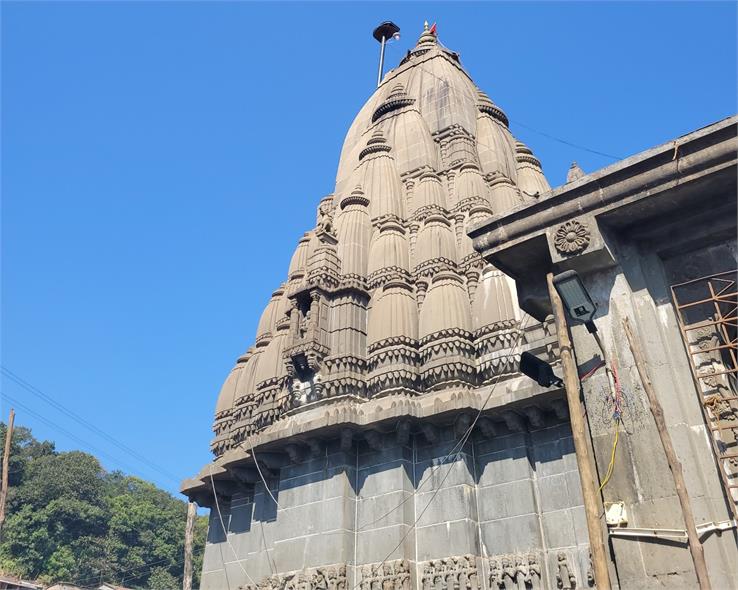
The main entrance of the temple, known as the Mahadwara, is a prominent feature. It is typically a large, elaborately decorated gateway, often embellished with sculptures depicting mythological scenes or divine beings. The Mahadwara is the threshold between the mundane world and the temple's sacred space.
Various other structures and elements greet visitors entering the temple complex. The mandapa (hall) provides a space for devotees to gather and participate in religious rituals and ceremonies. Intricately carved pillars often support it, displaying motifs inspired by Hindu mythology.
The temple's inner sanctum, the Garbhagriha, houses the main deity, Lord Bhimashankar, as a Jyotirlinga. The shrine is a small, dark chamber symbolising the cosmic void and is considered the most sacred area of the temple. The Jyotirlinga is a natural stone or pillar representing Lord Shiva's divine energy.
The temple complex also includes other structures, such as subsidiary shrines dedicated to various deities associated with Lord Shiva. These shrines provide spaces for devotees to offer prayers and seek blessings. The temple grounds may also feature courtyards, gardens, and other architectural elements that enhance the overall aesthetic appeal and spiritual ambience.
The Bhimashankar Temple's architecture reflects the region's cultural and religious significance. It stands as a testament to the skill and devotion of the artisans who crafted it, and it serves as a place of pilgrimage for devotees seeking spiritual solace and divine blessings.
Also Read: Somnath Jyotirlinga The Revered Abode of Lord Shiva
Legend
The legend behind Bhimashankar Jyotirlinga is associated with the defeat of the demon Tripurasura by Lord Shiva. The story goes as follows:
Three powerful demons were named Vidyunmali, Tarakaksha, and Viryavana long ago. They were collectively known as the Tripurasuras, causing havoc and chaos. These demons were blessed with immense power and invincibility, making them difficult to defeat.
The gods, unable to withstand the tyranny of the demons, sought help from Lord Shiva. Lord Shiva, known for his fierce form, agreed to eradicate the Tripurasuras. He embarked on a battle against them, but their impenetrable forts and protective shields made it challenging for Lord Shiva to defeat them.
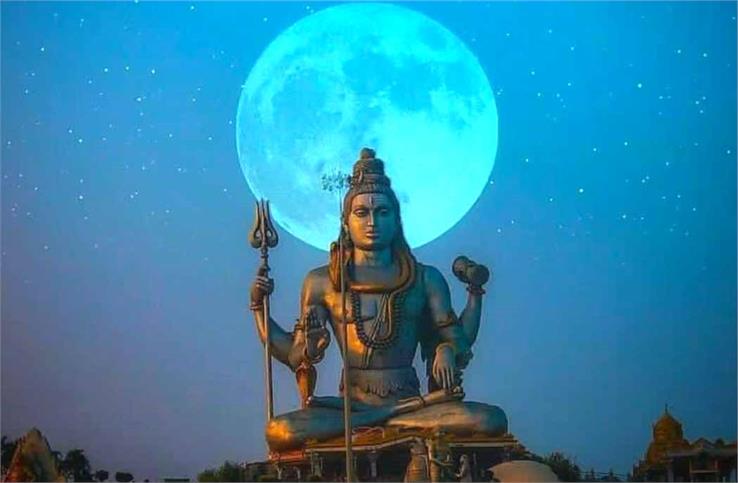
Lord Shiva then meditated and performed penance on Maharashtra's Sahyadri Mountains (now known as the Bhimashankar Hills). Pleased with his devotion, Lord Brahma granted him a powerful arrow called the "Pasupatastra."
With the divine weapon in his possession, Lord Shiva rode on his vehicle, the Nandi bull, and approached the formidable forts of the Tripurasuras. He fired the Pasupatastra, which destroyed the forts and defeated the demons. The weapon's impact created a massive fire, and a jyotirlinga (lingam of light) emerged from the fire at the present location of Bhimashankar.
This jyotirlinga came to be known as Bhimashankar Jyotirlinga, signifying the divine manifestation of Lord Shiva's power and victory over the demons. The intense energy and presence of Lord Shiva in the form of the jyotirlinga at Bhimashankar blesses devotees and grants them liberation, peace, and fulfilment of their desires.
The legend of Bhimashankar Jyotirlinga showcases the triumph of good over evil and emphasises the power and benevolence of Lord Shiva. Devotees visit this sacred site to seek blessings, offer prayers, and experience the divine presence of Lord Shiva.
Also Read: Best Affordable Hotels Near Bhimashankar Temple
Another Legend
In ancient times, there existed a powerful demon named Bhima. He lived with his mother in Kamrup Pradesh and was the son of Kumbhakarna, the younger brother of the mighty demon Ravana. Unaware of his father's fate, Bhima grew up ignorant until his mother revealed the truth. Learning of his father's death at the hands of Lord Rama, an incarnation of Lord Vishnu, Bhima became consumed with anger and sought revenge against Lord Shri Hari.
Determined to defeat Lord Vishnu, Bhima embarked on a thousand years of penance. Pleased with his devotion, Lord Brahma granted him a boon of invincibility, making him the world's ruler. He attacked and usurped Devlok, driving out the gods.
Fearing the ruthless oppression of Bhima, the sages and gods sought refuge in Lord Shiva. They shared their anguish and the suffering of all beings caused by Bhima's tyranny. Upon hearing their prayers, Lord Shiva assured them that he would soon slay the demon and rescue King Sudakshin, a devoted worshipper of Lord Shiva and a prisoner of Bhima.
Encouraged by Lord Shiva's promise, the sages and gods returned to their abodes. Meanwhile, King Sudakshin, confined in Bhima's prison, meditated upon Lord Shiva. He offered prayers to the earthly Shivling, a representation of Lord Shiva. Bhima grew furious and attacked the Shivling with his sword. Suddenly, Lord Shiva emerged from within the Shivling and incinerated Bhima.
The sages and saints began praising Lord Shiva. They implored him to dwell there permanently for the well-being of the people. The region would become sanctified. Accepting their prayers, Lord Shiva manifested as a radiant Jyotirlinga, forever known as Bhimashankar.
From that moment onwards, Bhimashankar Jyotirlinga became renowned as a sacred and revered place of worship. Lord Shiva, in the form of the Jyotirlinga, blesses devotees and ensures their welfare. The temple stands as a testimony to the divine intervention of Lord Shiva in vanquishing the tyrant Bhima and restoring peace and righteousness to the world.
Spiritual Significance
The temple of Bhimashankar Jyotirlinga is a testimony to the spiritual vibrancy of this place. Devotees from all corners of the world flock to seek the blessings of Lord Shiva. The temple's intricate architecture, with its elaborate carvings and ornamentation, is a sight to behold. The sanctum encases the Jyotirlinga, where devotees offer prayers and witness the positive energy that radiates from this sacred manifestation.
Trekking to Bhimashankar Temple
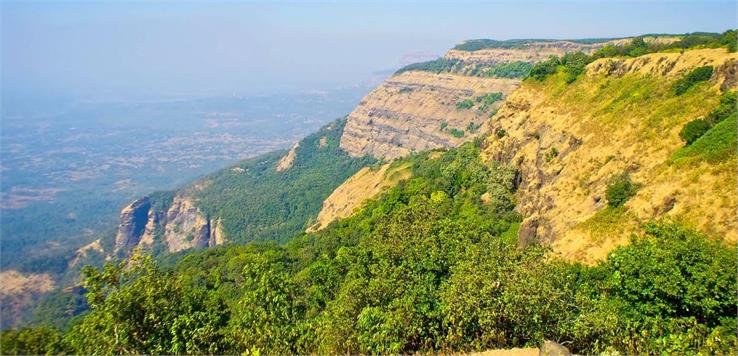
Trekking in Bhimashankar is a popular activity for adventure enthusiasts and nature lovers. The region offers picturesque landscapes, dense forests, and an opportunity to explore the beauty of the Western Ghats. The trek to Bhimashankar Temple is challenging but rewarding, offering breathtaking views and a spiritual experience. Here is a guide to trekking in Bhimashankar:
1. Trekking Routes
There are multiple trekking routes to Bhimashankar, and you can choose the one that suits your fitness level and preferences. The most popular way is from Khandas village, located at the base of the hill. The trek from Khandas is approximately 13 kilometres long and takes around 5-6 hours to reach the temple.
2. Starting Point - Khandas
To begin the trek, you can reach Khandas village by road. Khandas is well-connected to major cities in Maharashtra and can be reached by private vehicles or public transportation. You can park your car in Khandas and start the trek from there.
3. Trekking Experience
The trek from Khandas to Bhimashankar involves traversing through dense forests, steep ascents, and rocky terrain. It is recommended to start early in the morning to avoid the heat and make the most of the day. The trail is well-marked, and you may encounter fellow trekkers and locals.
4. Scenic Beauty
During the trek, you will see mesmerizing views of lush green valleys, waterfalls, and diverse flora and fauna. The Bhimashankar Wildlife Sanctuary is home to various plant and animal species, including the Malabar Giant Squirrel and the Indian Giant Squirrel. The scenic beauty of the Western Ghats makes the trek a memorable experience.
5. Bhimashankar Temple
Once you reach the Bhimashankar Temple, you can take blessings and explore the spiritual ambience. The temple is dedicated to Lord Shiva and is an important pilgrimage site. It is believed to be one of the holiest places in Maharashtra.
6. Return Journey
After spending time at the temple, you can either trek back to Khandas or take an alternate route to descend. Some trekkers opt for the Ganesh Ghat route, which is slightly longer but offers different views and experiences. Plan your return journey and ensure enough time to complete the trek before sunset.
7. Essential Tips
- Carry sufficient water to stay hydrated throughout the trek.
- Wear comfortable trekking shoes and clothing suitable for weather conditions.
- Pack energy snacks and a packed lunch for the journey.
- It is advisable to trek in a group or hire a local guide familiar with the route is advisable.
- Check the weather conditions and be prepared for sudden changes.
- There are no ATMs near the temple, so it is best to withdraw cash in advance.
- There are a few Dharamshala (rest houses) near the temple, but booking your accommodation in advance is best, especially during the peak season.
- The nearest hospital is in Lonavala, so carrying a first-aid kit with you is a good idea.
Trekking in Bhimashankar offers an opportunity to connect with nature, challenge oneself, and experience the spiritual aura of the region. It is recommended to plan your trek, be physically prepared, and follow safety guidelines to make the most of your trekking experience.
Discovering Nature's Marvels
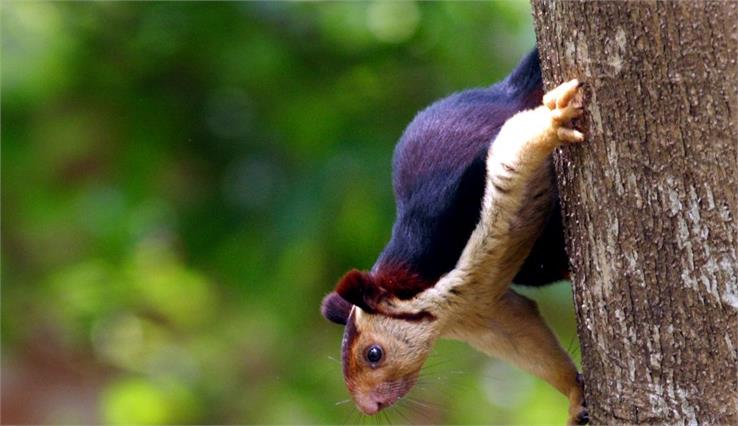
Apart from its spiritual significance, Bhimashankar Jyotirlinga is nestled within the Bhimashankar Wildlife Sanctuary, making it a haven for ecotourism. The sanctuary has various flora and fauna, including giant squirrels, langurs, and the elusive Indian Giant Squirrel. Bird watchers can also catch glimpses of colourful avian species soaring through the skies.
Festivals and Celebrations
Mahashivratri is a Hindu festival celebrated in honour of Shiva. It is the most important festival of the year for followers of Shiva. The festival is on the 14th night of Phalguna's lunar month, typically in February or March.
The celebrations at Bhimashankar Temple during Mahashivratri are particularly elaborate devotees from India flock to the temple to participate in the festivities.
Other festivals celebrated at Bhimashankar Temple include-
1. Kartik Poornima: This festival is on the full moon day of Kartik, typically in November or December. Lord Shiva killed the demon Tripurasur on this day.
2. Ganesh Chaturthi: This festival honours the god Ganesha. Ganesh Chaturthi is on the fourth day of the waxing moon in Bhadrapada, typically in August or September.
3. Diwali: This festival of lights is in honour of Lakshmi, the goddess of wealth and prosperity. It is on the new moon day of Kartik, which typically falls in November or December.
The celebrations at Bhimashankar Temple during these festivals are also very elaborate and attract large crowds of devotees.
Best Time To Visit
The best time to visit the Bhimashankar Temple is from October to February, which is the winter season in the region. During this time, the weather is pleasant with cool temperatures, making it comfortable for temple visits and outdoor activities.
Here are a few reasons why the winter season is considered ideal for visiting Bhimashankar Temple:
Weather: The winter season offers relief from summer's scorching heat and the monsoon season's heavy rainfall. The temperatures during winter are mild and enjoyable, ranging from around 10°C to 25°C, providing a comfortable environment for exploring the temple complex and its surroundings.
How To Reach
Various modes can reach Bhimashankar temple. Here is a guide on how to get to Bhimashankar Temple:
1. By Air
The nearest airport to Bhimashankar is Pune International Airport, approximately 95 kilometres away. You can hire a taxi or take a bus from the airport to Bhimashankar. The journey by road from Pune to Bhimashankar takes around 3-4 hours.
2. By Train
The nearest railway station to Bhimashankar is Pune Junction, which is well-connected to major cities in India. You can hire a taxi or take a bus from Pune to Bhimashankar. The road journey takes around 3-4 hours.
3. By Road
Bhimashankar is well-connected by road, and there are regular bus services from major cities in Maharashtra to Bhimashankar. State-owned buses, as well as private buses, operate on this route. You can also drive to Bhimashankar by hiring a taxi or using your vehicle. The roads are well-maintained, and the drive offers scenic views of the Western Ghats.
Here are a few popular routes to reach Bhimashankar by road-
1. Pune - Take the Pune-Nashik Highway (NH60) and drive towards Rajgurunagar. From Rajgurunagar, take the Bhimashankar Road to get to Bhimashankar.
2. Mumbai - Take the Mumbai-Pune Expressway (NH48) and continue on the Pune-Nashik Highway (NH60). Drive towards Rajgurunagar and then take the Bhimashankar Road to reach Bhimashankar.
3. Nashik - Take the Nashik-Pune Highway (NH50) and drive towards Rajgurunagar. From Rajgurunagar, take the Bhimashankar Road to reach Bhimashankar.
Local Transportation
Once you reach Bhimashankar, you can explore the temple complex and the surrounding areas on foot. The temple has a beautiful natural setting, and you can enjoy a serene walk. Local jeeps available for hire can take you around the Bhimashankar Wildlife Sanctuary for wildlife sightings.
It's advisable to check the road and weather conditions before planning your trip to Bhimashankar, especially during the monsoon season, as heavy rainfall can sometimes cause roadblocks.


